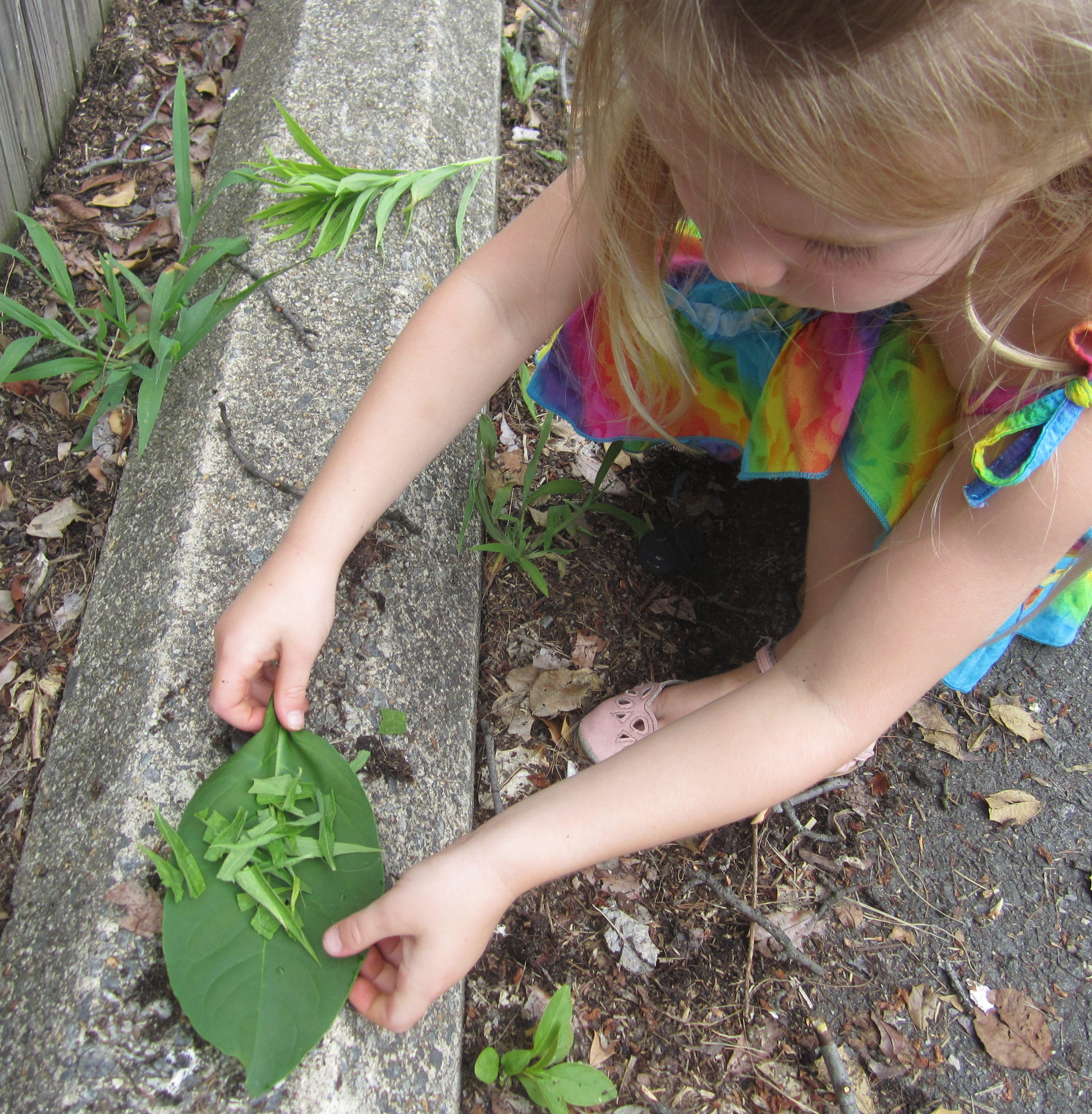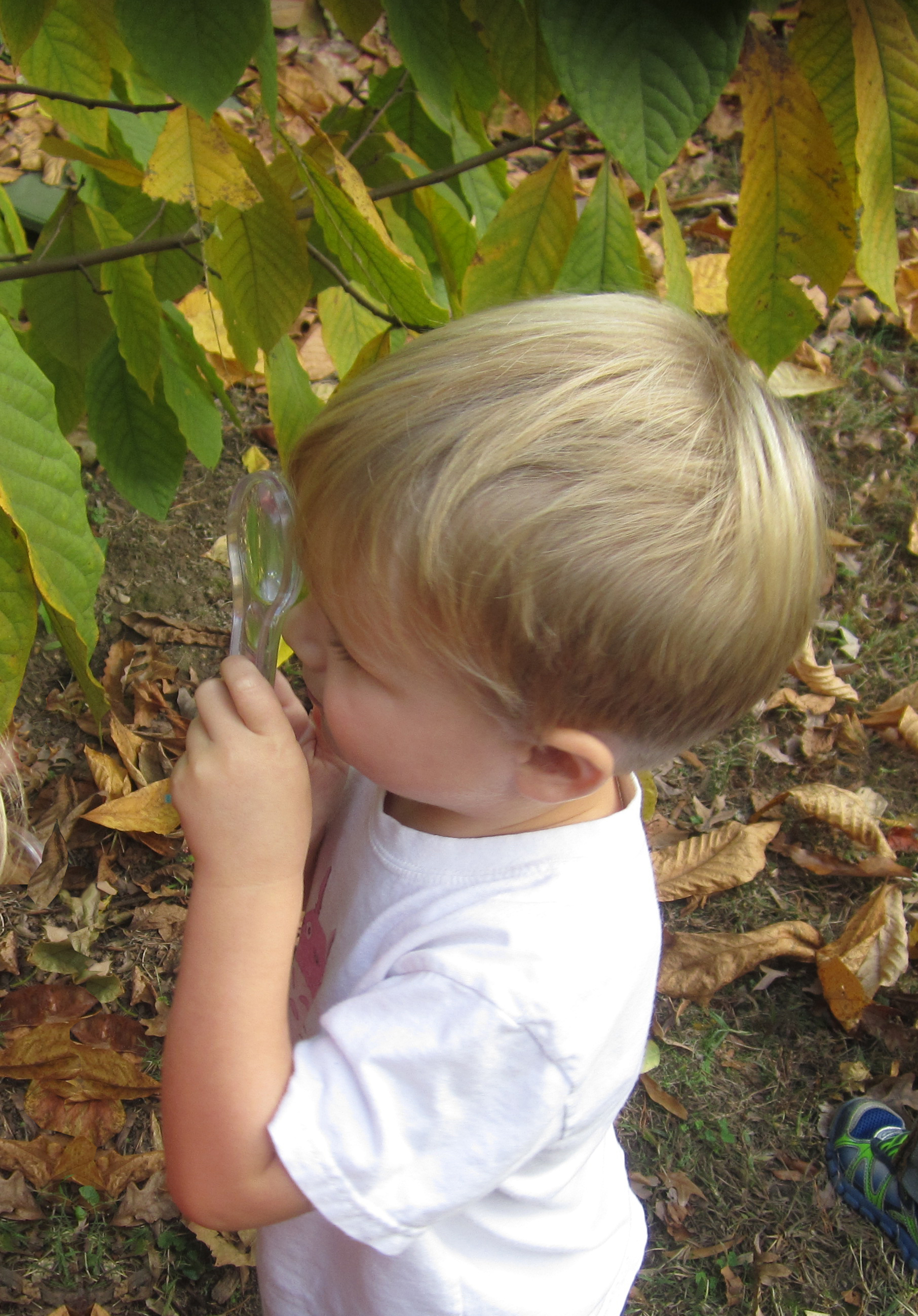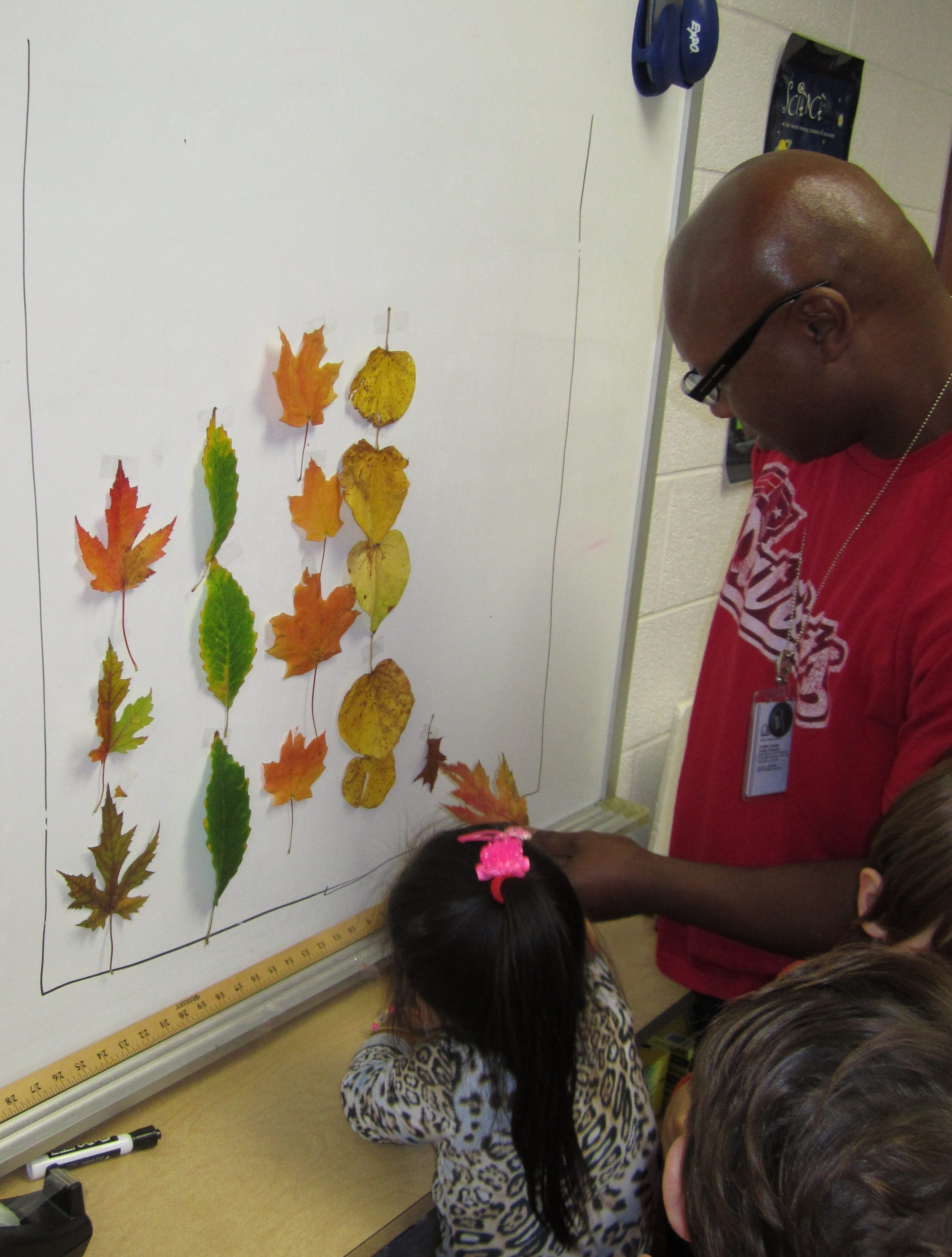Fall leaves, props for learning
By Peggy Ashbrook
Posted on 2017-10-14

Poison Ivy By Famartin (Own work) via Wikimedia Commons [CC BY-SA 4.0 (https://creativecommons.org/licenses/by-sa/4.0)]
If you live in an area of the world where leaves change color during Autumn you and the children might be looking for “The Most Beautiful Leaf” among the many fallen leaves. You can draw children’s attention to leaves at any time of the year by using them as play materials—a large leaf makes a plate and the small ones become pretend “food.” Knowing which leaves are safe for children to handle is the first consideration! Poison ivy leaves turn a beautiful red color in the fall in many areas but they are still able to irritate our skin and make it blister.
Looking at leaves and noticing their structure begins young children’s understanding of their function. Cutting leaves with scissors as a way to practice this fine motor skill also teaches children that leaves have different parts. It is easy to imagine the veins as small pipes carrying water to the body of the leaf–especially when you cut one open and see the “juice.” Making a rubbing on paper with crayons shows off the pattern of veining which is particular to each species. Dropping water onto the upper and undersides of leaves may reveal the tiny hairs that some species of plants have on their underside as children note how water drops either slide off or pool up. Understanding the function of this form, how the hairy underside and smooth upper side help the plant survive, will come later. Magnolia leaves are particularly useful for showing differences between upper and undersides. They make wonderful boats too, floating in puddles or small tubs of water.
- Cutting a leaf with scissors.
- Imaginative play with leaves.
- Using a magnifier to see leaf structure.
- Graphing leaves by shape.
- Close observation through drawing.
Changes in leaves can be a sign of changing seasons that young children can observe along with changing air temperature and the position of the sun in the sky. Understanding the chemistry involved in those beautiful words “chlorophyll” and “photosynthesis” can wait until middle school when students begin learning that living things are made of cells (MS-LS1-1 From Molecules to Organisms: Structures and Processes). See Appendix E – Progressions Within the Next Generation Science Standards to see how student thinking progresses with grade level.
Teachers who want to learn more about the processes that cause deciduous leaves to change color in the fall can read these resources:
Robertson, Bill. 2012. Q: Why Do Leaves Fall off Trees in the Fall? Science and Children. 49(7): 68-69
USDA Forest Service, Northeastern Area. Why Leaves Change Color.
The United States National Arboretum. The Science of Color in Autumn Leaves.
The changing leaf color in Autumn occurs at a cellular level due to a process that young children are not yet ready to understand. But they do understand beauty and how to make a collection of the “best” leaves!
Disclaimer: The views expressed in this blog post are those of the author(s) and do not necessarily reflect the official position of the National Science Teaching Association (NSTA).







